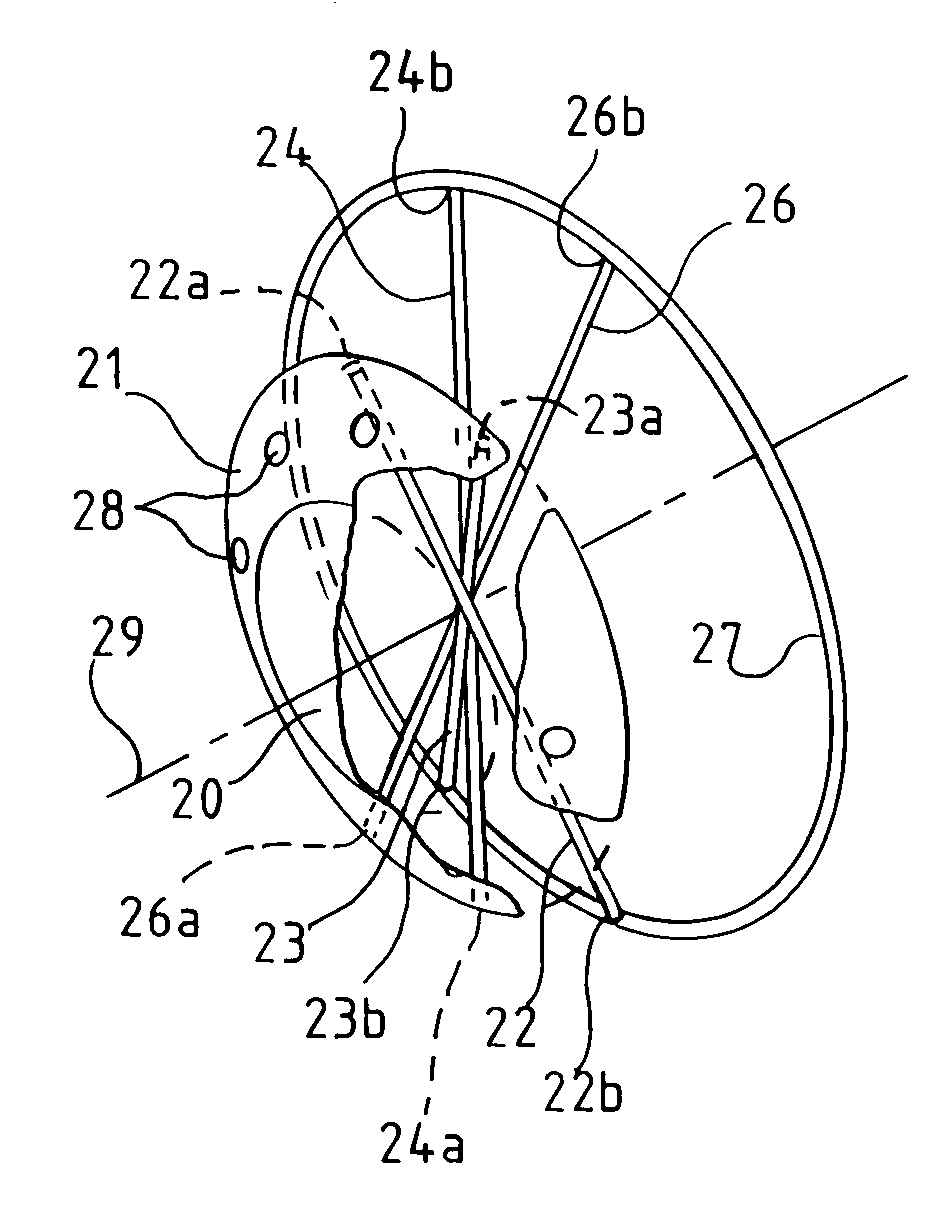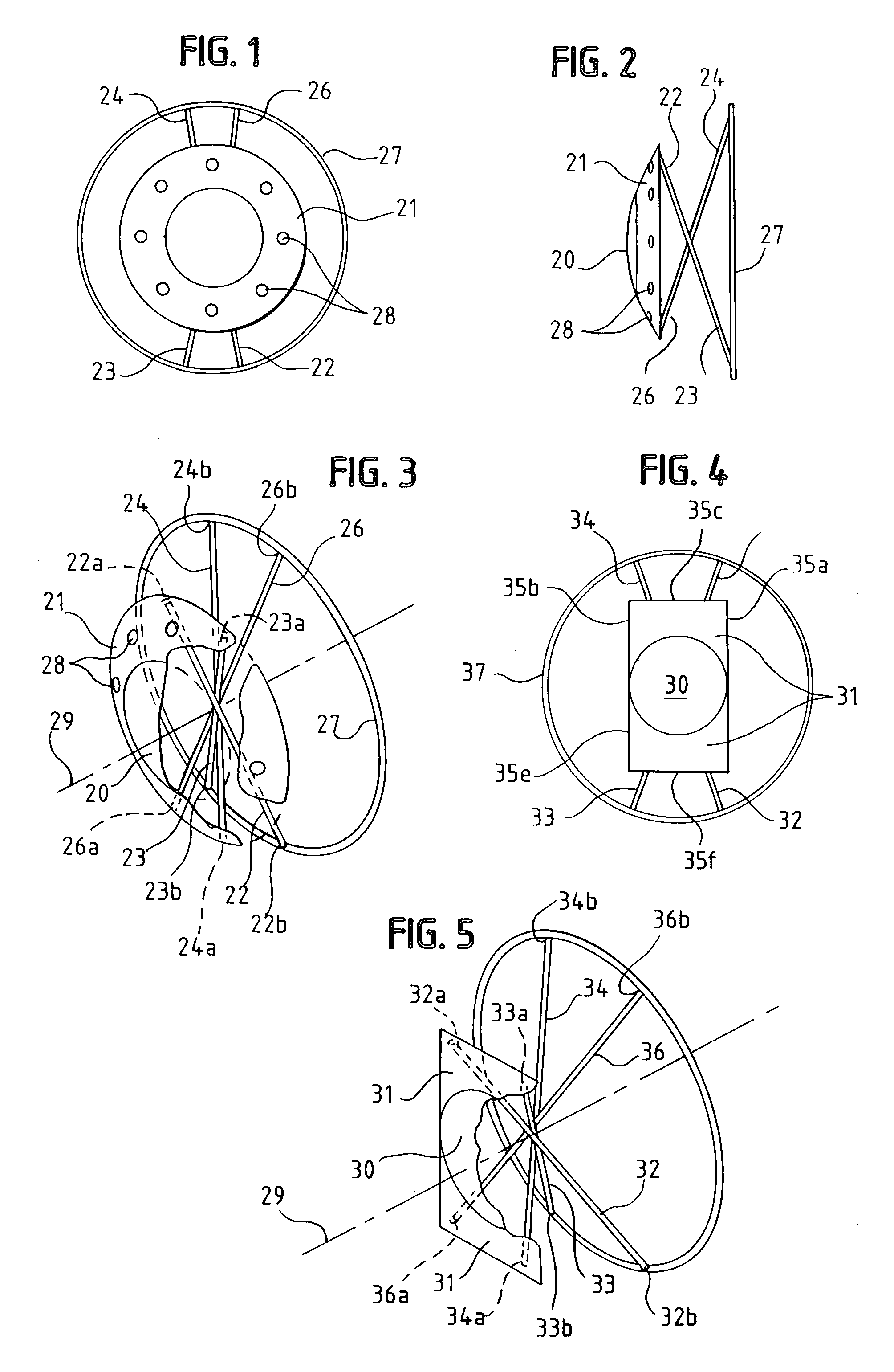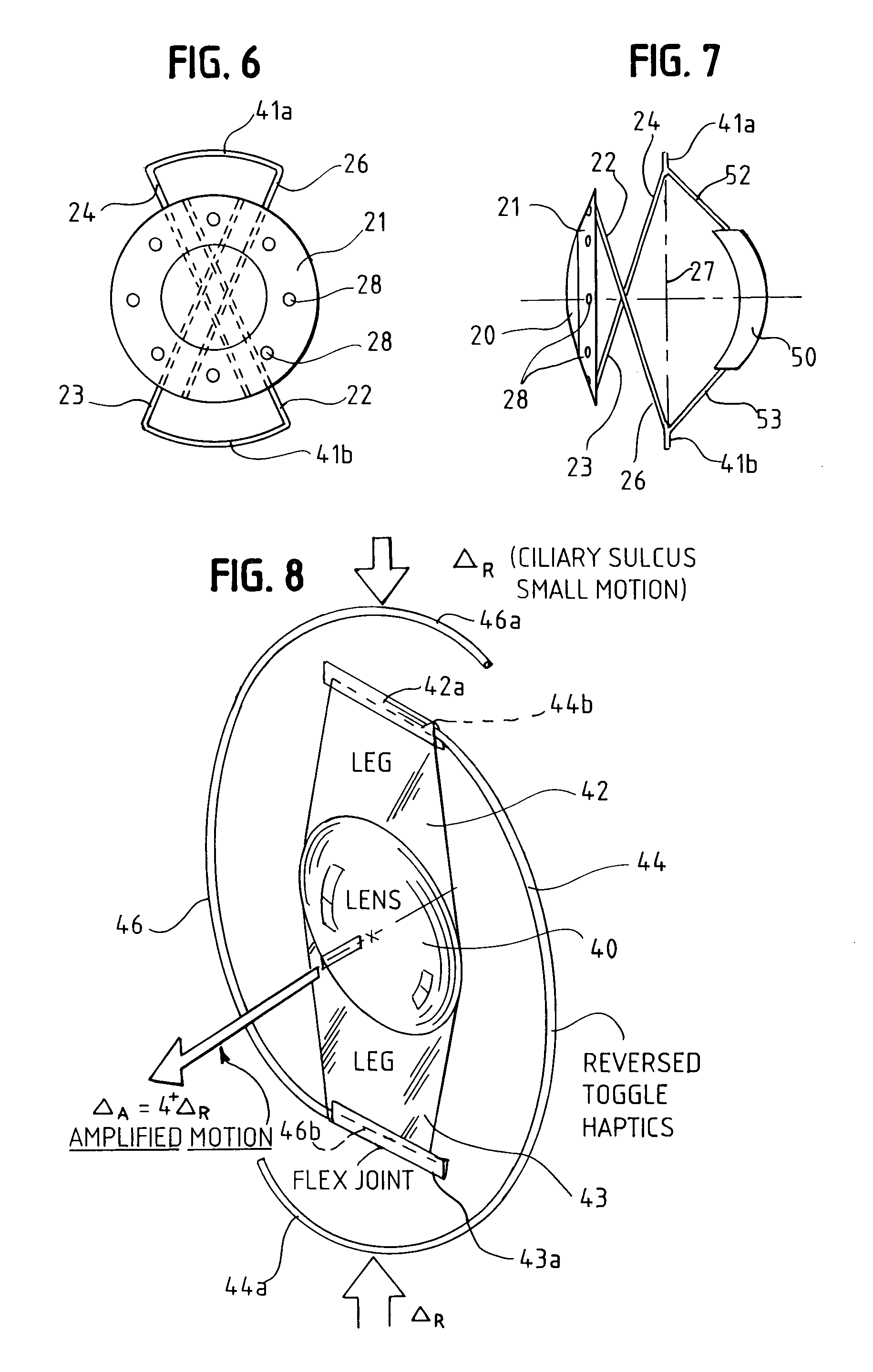Accommodating intraocular lens
a technology for intraocular lenses and lenses, applied in intraocular lenses, medical science, prostheses, etc., can solve the problems of blurry image formed by the zone under consideration, loss of accommodative range of human lenses, and loss of transparency, so as to achieve the effect of large lens movemen
- Summary
- Abstract
- Description
- Claims
- Application Information
AI Technical Summary
Benefits of technology
Problems solved by technology
Method used
Image
Examples
Embodiment Construction
[0027]Our invention relates to an intraocular lens (IOL), having either a positive lens and / or a negative lens. When two lenses (positive and negative lenses) are to be used in one eye, the positional order of the lenses in the eye can be either with the positive lens more anterior or the reverse, or with the negative lens more anterior or the reverse. Each single or dual lens system may be placed either outside or within the capsular bag. The two lens system may or may not have the two lenses mechanically linked to one another by tabs and strut-like linkages (haptics) attached to the two lenses. During cataract surgery and IOL implantation, the positive and / or negative lenses may be inserted intra ocularly either one at a time (if the components are not mechanically linked to one another), or both at the same time (if the components are mechanically linked to one another). The linkages serve to hold the positive and negative lenses in place, as well as serve to adjust and control t...
PUM
 Login to View More
Login to View More Abstract
Description
Claims
Application Information
 Login to View More
Login to View More - R&D
- Intellectual Property
- Life Sciences
- Materials
- Tech Scout
- Unparalleled Data Quality
- Higher Quality Content
- 60% Fewer Hallucinations
Browse by: Latest US Patents, China's latest patents, Technical Efficacy Thesaurus, Application Domain, Technology Topic, Popular Technical Reports.
© 2025 PatSnap. All rights reserved.Legal|Privacy policy|Modern Slavery Act Transparency Statement|Sitemap|About US| Contact US: help@patsnap.com



